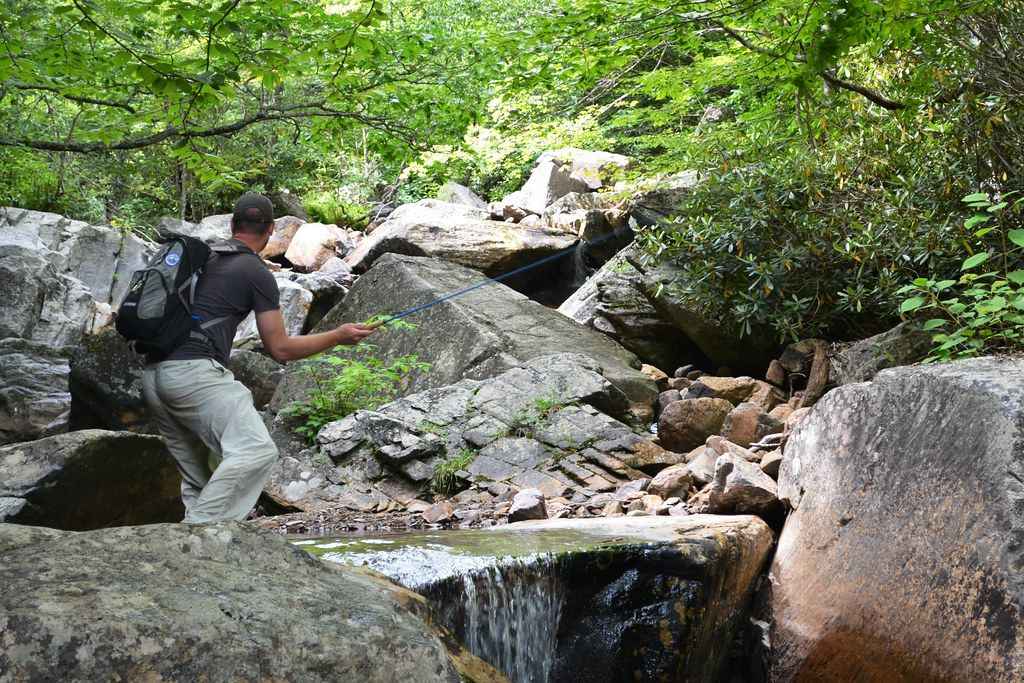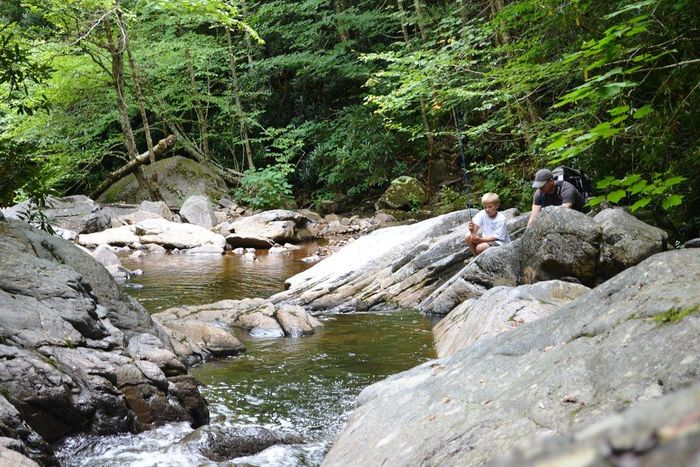What is Tenkara Fishing and Why You Should Try It
Learn more about tenkara fishing and why this unique technique is becoming more and more popular in the Western world.

Known for its simplicity and efficiency as a fishing method, tenkara fishing is still not yet widely known in the Western world. However, it has slowly been gaining popularity, especially among fly fishers looking for a similar technique that requires less gear and puts more focus on the act of fishing itself. But what exactly is tenkara fishing and why should you try it at least once in your life?
Where Tenkara Originated From
Tenkara fishing originated from Japan, particularly in the remote regions, where commercial fishers had to improvise with their equipment to catch fish in the mountain streams. Its name comes from the phrase “fishing from heaven” in Japanese. One possible explanation for the name is that it is taken from the trout’s point of view as it sees the fly presented to it coming from up above. Though it has been around for at least 400 years, it was only recorded in books in the 1800s. The term itself was only made official in the 1980s in a fishing magazine called Tsuribito by Yuzo Sebata. Prior to this official naming, the practice was referred to as both tenkara and kebari tsuri (“fishing with a fly”).

The early tenkara anglers used bamboo as their rods and because they had no access to anything that may act as a substitute for reels, they used a “fixed line” method, with the line tied to the end of the rod. The fishing practice was mostly used by commercial fishermen who sold their catches to local ryokans and inns. To avoid competition and to protect their secret techniques, they refused to share the names of their flies. And to focus more time on developing their own skills, they simply used a single fly, a practice that has been adapted to this day.

The Tenkara Setup
Nowadays, the tenkara setup remains the same: a line at the tip of a rod and a single fly to attract fish. The tenkara rod is typically long and made of high modulus graphite for durability. It has to have a flexible tip to help absorb the fight of the fish you’ve caught and is long enough to keep the line off the water. The general advice for beginner tenkara anglers is to get the longest rod you can find, measuring at least 11 to 13 feet when uncapped. If you’re a more experienced angler and would like to challenge yourself with catching bigger trophies on a tenkara rod, go for longer rods measuring at least 13 feet. Now, if you’re keen to fish smaller streams, a shorter rod 12 feet rod will be more beneficial for you.
The tenkara line, on the other hand, is directly tied onto the tip of the rod. It is designed to help anglers cast flies more lightly. Tenkara uses a tippet to connect the fly to the line, as in fly fishing. To choose a tenkara line, one must choose a line that is heavy enough for casting yet light enough to stay off the water after casting the fly. Another factor to consider is its visibility so that the angler can easily keep track of the line itself and the fly. There are two types of tenkara lines -- a tapered line which allows for a softer cast, and the level line which is a little more versatile. The length of the line depends on the water you plan to fish, but a good rule of thumb is to get one the same length as the rod you’re using.
As for the fly, anglers practicing tenkara in the Western world typically still use artificial flies such as dry flies or nymphs that they would ordinarily use in fly fishing. However, if you want to do it as the Japanese do, look into procuring a sakasa kebari, or a reverse-hackle fly. It is different from the typical artificial flies used in the Western world because instead of mimicking the look and behavior of specific insects, the kebari looks like any old bug with its wings out and if you employ it right, it can attract fish from across the water. Size 12 flies will work well, but if you’re fishing in waters that are fast flowing or not as clear, go for something bigger.

Fish Species Anglers Can Target with Tenkara Fishing
Originally, tenkara was used by Japanese anglers to catch small to medium-sized trout and other cold-water fish species in inland mountain streams. However, anglers practicing tenkara in the United States have reported success with the fishing method catching not just brown trout and brook trout but bluegill and bass in a variety of water bodies.
The Joys of Tenkara Fishing
While still not as popular as fly fishing, more and more anglers in the United States and Europe are discovering the joys of tenkara fishing. Many young mountaineers have taken to the practice even though fly fishing did not resonate with them. It’s because this particular fishing method makes one feel more connected to the fish and nature, making it another activity that they can enjoy with their hike. Plus, many tenkara rods are collapsible, so they’re easier to carry around compared to a whole arsenal of fly fishing gear.
The tenkara fishing method is a great way to simplify your fishing. Because it requires very little variation on equipment and even advocates for the one-fly approach, it puts the angler’s focus back on the act of fishing instead of on the gear. It is a great way to introduce newbie anglers to fly fishing as well because while similar to fly fishing, it takes less time to learn casting with the tenkara method. It teaches anglers how to read the water and how to best present a fly to a catch. And because central to the practice of tenkara is the absence of a reel, anglers can use it as a great test to their fishing skills.




